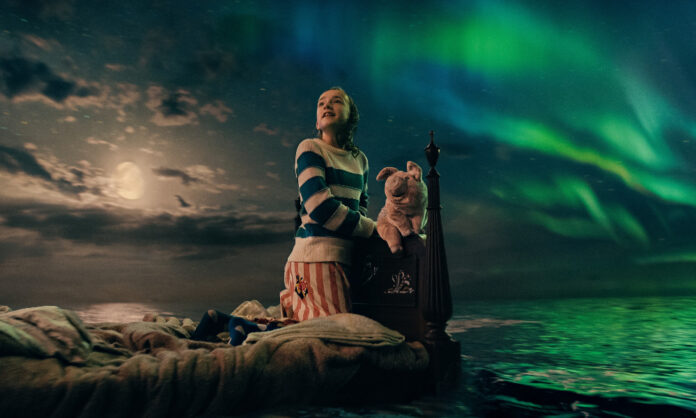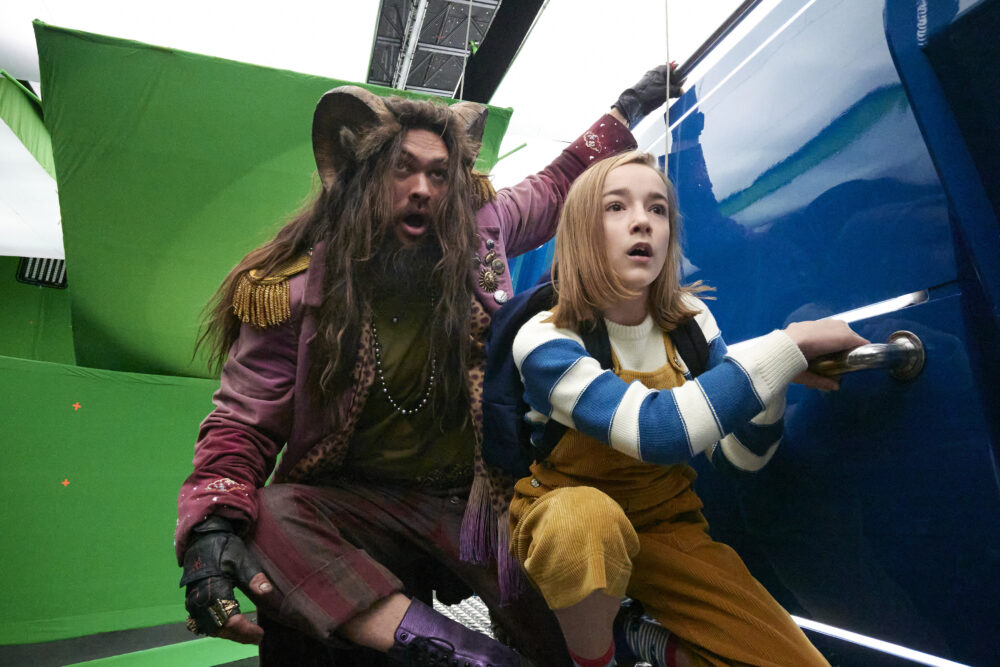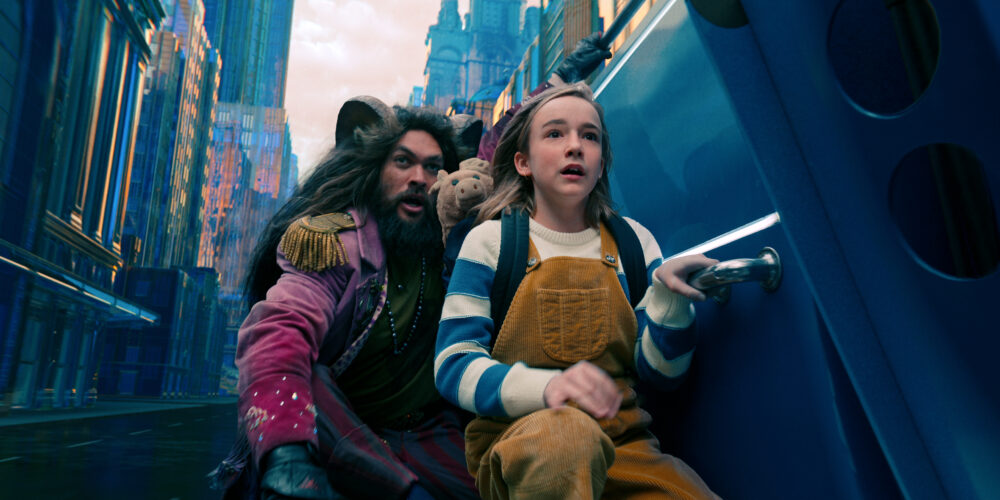***This article originally appeared in the December ’22 issue of Animation Magazine (No. 325)***
In his fifth outing with filmmaker Francis Lawrence, visual effects supervisor Adrian de Wet (See, The Hunger Games franchise) has turned to the story of a young girl who attempts to reconnect with her later father through her dreamscapes in the feature Slumberland. The fantasy adventure, which is based on Winsor McCay’s early 20th century comic strip Little Nemo in Slumberland, was produced by Chernin Entertainment for Netflix and features Marlow Barkley, Jason Momoa, Kyle Chandler, Weruche Opia, India de Beaufort and Chris O’Dowd.
“Most of the film takes place in a young girl’s dreams, where we are not so constrained by the physical realm with its inconvenient logical consequences!” says de Wet, whose credits also include Hellboy II: The Golden Army, The Matrix Reloaded and Total Recall. “Francis wanted all the dreams to have a signature look, such as an added element that wasn’t in the waking world, for example specific lens flares or knee-high grass blowing in the wind. And a whole bunch of other stuff that we were going to figure out later, of course.”
Beat sheets were written for the main sequences that were then turned into shot lists. “We hired a storyboard artist, Amy Umezu, to start blocking out sequences,” says de Wet. “This R&D phase was extended due to COVID-19, and we made sure we used the time. We managed to storyboard a great deal of the movie, including the entire third act, so we were in a great place to get going with previz, which was divided between Framestore and Halon.”
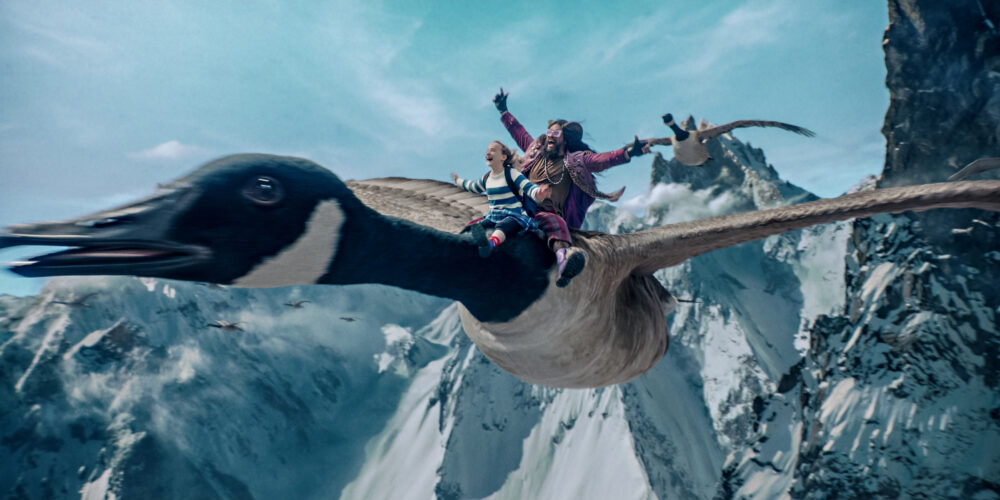
Chasing Dreams
A year was spent in post-production by Framestore, Rodeo FX, Ghost VFX, Outpost VFX, Scanline VFX, DNEG, Important Looking Pirates and an in-house team to create 1,150 visual effects shots that had long, slow camera moves, low angles and wide lenses. De Wet also served as the second unit director, with highlights being the Garbage Truck Chase and the Ferry Crossing in the first act.
The visual research team spent a lot of time finding references for all of the dreams. “Dolphins breaching bioluminescent oceans, giant waves crashing into a lighthouse, London under attack in the Blitz in World War II and Canadian geese flying in Alpine scenery are all things that have happened in the real world, and have been documented,” observes de Wet. “But an inverted sea bed with huge fish skeletons and a swirling cloudy ‘sky’ was something that we had to come up with from scratch during our concept phase, and then handover to DNEG. And a salsa dance party where everyone is made out of butterflies? Well, there’s no reference library for that!”
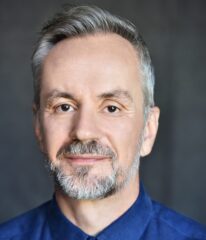
The iconic image of a walking bed taken from the comic strip had to be reinterpreted cinematically. “On the day of the shoot, rather than use a mechanical gimbal with servo-controlled dynamics to move the bed-base with Marlow on top, we instead used the skills of grips in greenscreen suits — one on each corner — to get a more realistic, stumbling performance of a young animal learning to walk.”
COVID protocols necessitated a salsa-dancing mo-cap shoot at Ubisoft Toronto, “Each dancer had to have their intra-butterfly magnetic forces finely tuned, based on their particular dance moves and where they were placed within the shot,” reveals de Wet. “Furthermore, each dancer had to be pre-simulated and baked because of the sheer volume of butterflies in a scene.”
This was surely a film with numerous creative challenges. As de Wet recalls, “The Nightmare Squid [actually more of an octopus] creature is supposed to be representative of Nemo’s darkest fears, which invades and ‘infects’ her dreams, and was planted in her imagination by her father when he told her the story of the ‘Sea of Nightmares’. Only when Nemo finds the courage to simply stand up to it is it destroyed. We figured that the creature needed to be made of something that was physically fluid, amorphous — yet scary and toxic-looking, so we chose smoke/ink.”
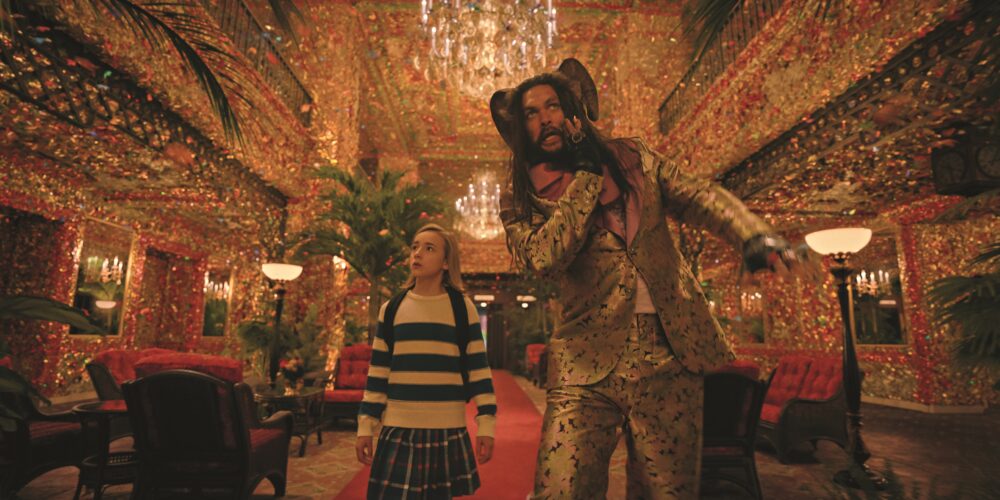
Many of the film’s underwater scenes were shot dry-for-wet onstage. “To achieve an underwater look, DNEG and ILP replaced Marlow’s hair with CG hair and often replaced some of her clothes with CG clothing to get the underwater rippling. They also added some digital lighting passes to get the underwater caustic lighting effect.”
Of course, no mention of the film’s effects can be complete without a toy swine called Pig, which is Nemo’s faithful companion. “We had multiple practical ‘stuffy’ pigs on set, not least because, in the waking world, Nemo has the Pig toy,” notes de Wet. “In her dream world, however, Pig is alive, and he walks, runs and has facial expressions. We used the stuffy for shots where she had to pick him up and hold him or put him in the backpack, and replaced it with CG. The challenge here was convincing interaction with squeezing, deforming, interactive shadows on Pig and cast by him, and interaction with the backpack when he was put inside it.”
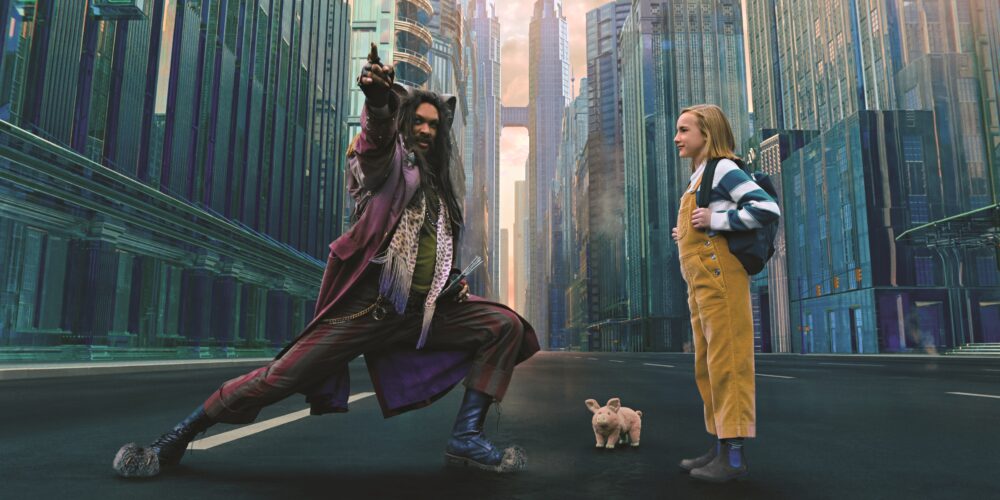
Plexiglass Perfection
In post-production, the environment that went through the most iterations was the plexiglass city. “Emmet [Jacob So] is a five-year-old child whose favorite toys are his blue garbage truck and his ‘magna tile’ plexiglass building set,” explains de Wet. “We made a whole world out of that, but we struggled a lot with the lighting and color palette. We wanted a blue/green overall hue, but it was all looking too uniform, until Sue Rowe’s team at Scanline VFX came up with the idea of having multiple low suns to provide some warmth in the sky and raking reflections of a complementary color, which added a new visual dimension.”
The film also required the production of a whole gamut of heavily simulated effects. Framestore created fur on Pig, feathers on the goose; DNEG and ILP simulated hair and cloth on all of Nemo’s underwater shots and the digi doubles.
ILP and Ghost VFX provided tons of water effects on and around the lighthouse and especially the scene where it gets destroyed by the giant wave. According to de Wet, Scanline VFX simulated water and weather effects in the garbage truck scene: rain, spray from the road, the waterfall, water cascading into the cab from the hole in the windshield when it’s sinking, as well as the stormy seas and weather effects for crossing the ocean at night in the waking world.
“Trying to get the depth, realism and sheer scale of the plexiglass city was so hard especially with that color palette and plastic reflective look,” adds de Wet. “The R&D phase of the salsa dancers was also quite challenging. We really had no idea what it was going to look like or what was going to work or not work, visually; that was a real voyage of discovery. Or it could have been the design of the Nightmare Squid, which changed from a slimy tentacled creature to a more inky/smoky version as the design developed.” He concludes, “It really was one of those projects where you go on a massively long, meandering creative journey and end up with something that really surprises you.”
Slumberland is currently streaming on Netflix worldwide.




